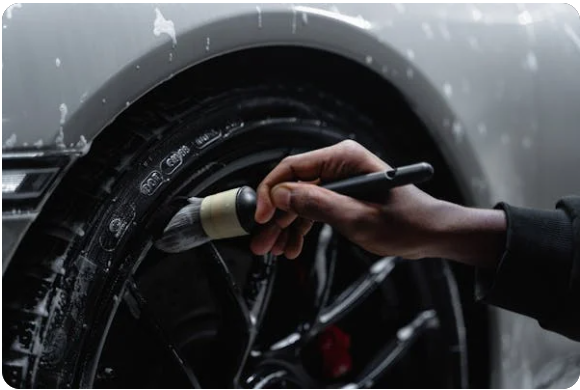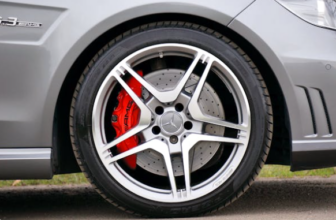
When it comes to selecting the right tires, one of the biggest decisions drivers face is whether to go with summer, winter, or all-season tires. Each type is engineered for specific weather conditions and driving habits, and choosing the wrong one can impact your safety, performance, and wallet. This guide will break down the differences, advantages, and trade-offs of each type—helping you make the best decision for your vehicle and environment.
1. Why Seasonal Tires Matter
Your tires serve as the connection between your car and the road. When temperatures drop or rise dramatically, so does tire performance. Different rubber compounds and tread designs behave uniquely in cold, hot, dry, wet, or snowy conditions.
Using the wrong type of tire in the wrong season can lead to:
- Poor traction and grip
- Increased braking distances
- Faster tread wear
- Compromised fuel efficiency
- Decreased handling
Let’s dive into what each tire type offers and which is ideal for your specific driving scenario.
2. All-Season Tires: Jack of All Trades, Master of None
What Are They?
All-season tires are designed to provide balanced performance in a variety of weather conditions including rain, light snow, and dry roads. They combine elements of both summer and winter tires to deliver versatility and year-round use.
Key Features:
- Moderate tread depth and symmetric tread patterns
- Harder rubber compound than winter tires
- Optimized for temperatures above 45°F (7°C)
Pros:
✅ Convenience – no need to switch tires each season
✅ Good performance in mild climates
✅ Typically quieter and more fuel-efficient than winter tires
✅ Cost-effective – only one set needed
Cons:
❌ Not ideal for severe winter conditions (ice or deep snow)
❌ Performance suffers in extreme heat compared to summer tires
❌ Less grip than dedicated seasonal tires
Best For:
- Drivers in temperate regions with moderate seasonal changes
- Urban/suburban commuters who rarely see snow
- Budget-conscious car owners
3. Winter Tires: Mastering the Cold and Ice
What Are They?
Winter tires (also known as snow tires) are specifically designed for extreme cold, ice, slush, and snow. Their rubber compound remains flexible at low temperatures to maximize grip.
Key Features:
- Soft rubber compound for flexibility in sub-zero temps
- Deep grooves and biting edges for snow and ice traction
- May feature sipes (tiny cuts) for better grip on slippery roads
- Some models are studded for even more traction on ice
Pros:
✅ Superior traction in cold, snow, and icy conditions
✅ Shorter stopping distances on winter roads
✅ Required by law in some regions during winter months
Cons:
❌ Noisy and less fuel-efficient
❌ Faster tread wear in warm weather
❌ Inconvenient – needs swapping each season
Best For:
- Drivers in regions with harsh winters, blizzards, and long snow seasons
- Those driving in mountainous or icy areas
- Families or individuals prioritizing maximum winter safety
Quick Tip:
Only install all four winter tires – mixing with other types can destabilize the vehicle and reduce control.
4. Summer Tires: Pure Performance for Warm Roads
What Are They?
Also known as performance tires, summer tires are designed for precision handling, optimal dry/wet grip, and responsive braking in warm weather.
Key Features:
- Specialized tread for enhanced grip on dry and wet roads
- Soft rubber compound that gets stickier as it heats up
- Shallower tread depth than all-season or winter tires
Pros:
✅ Excellent cornering and handling
✅ Best braking performance on dry/wet roads
✅ Smooth and quiet ride in warm weather
Cons:
❌ Lose grip and become stiff in cold temperatures
❌ Not suitable for snow, ice, or freezing conditions
❌ Often more expensive and wear out faster
Best For:
- Sports cars, performance vehicles
- Drivers in hot, dry climates or regions with short winters
- Enthusiasts who enjoy aggressive or spirited driving
5. Comparing All Three at a Glance
| Feature | All-Season | Winter Tires | Summer Tires |
|---|---|---|---|
| Temperature Range | 45°F to 90°F | Below 45°F | 50°F and up |
| Best For | Mild climates | Snow/ice-heavy areas | Warm, dry/wet climates |
| Traction in Snow/Ice | Moderate | Excellent | Poor |
| Traction in Rain | Good | Good | Excellent |
| Dry Road Performance | Good | Fair | Excellent |
| Fuel Efficiency | High | Moderate | High |
| Ride Comfort/Noise | Quiet | Noisy | Quiet |
| Tire Wear in Wrong Season | Increases | Fast in warm temps | Fast in cold temps |
6. Can You Use One Tire Type All Year Round?
Technically? Yes.
Practically? It depends.
If you live in a mild climate (e.g., Southern California, Florida, or Texas), all-season tires can often serve you well year-round. But if you live somewhere that gets below freezing temperatures or consistent snowfall, investing in a separate set of winter tires is a smarter move—both for safety and tire longevity.
All-Weather Tires: A Bonus Option?
Some brands now offer all-weather tires—a newer category that blends the features of all-season and winter tires. They carry the Three-Peak Mountain Snowflake symbol (3PMSF), meaning they meet winter traction requirements.
They’re a great compromise for places with light winters, but they still can’t beat true winter tires in extreme conditions.
7. Storage Tips When Swapping Tires
If you’re switching between summer and winter tires seasonally, proper storage is crucial to keep them in good shape:
- Clean them thoroughly before storing
- Store in a cool, dry place away from direct sunlight
- Use tire bags or wrap in plastic to prevent rubber degradation
- Stack tires flat or hang them vertically—never lean them against a wall long-term
8. The Cost Factor: Which Option Saves Money?
At first glance, buying two sets of tires (summer and winter) may seem expensive. But in reality, using seasonal tires:
- Extends the life of each set
- Reduces wear and tear from improper seasonal use
- Minimizes emergency costs (like towing or accident repairs in bad weather)
So while the upfront cost is higher, you save in the long run.
9. What the Experts Recommend
- Live in a snowy region? Go for winter + summer or all-season + winter combo.
- Mild climate with occasional cold snaps? Try all-weather tires or premium all-season tires.
- Drive a sports car or performance sedan? Summer tires are your best bet—paired with winter tires if you face cold seasons.
Always check your owner’s manual and speak with a trusted tire technician or mechanic if in doubt.
Final Thoughts
Choosing between summer, winter, and all-season tires comes down to where you live, how you drive, and what you value most—whether it’s convenience, performance, or safety.
Don’t gamble with traction. Make an informed choice and swap tires when the seasons demand it. Your vehicle—and your peace of mind—will thank you.



